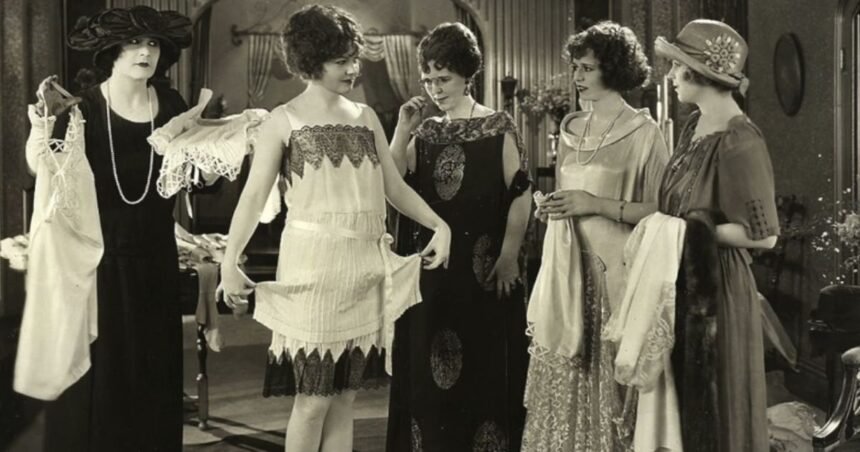The 1920s were a decade of change in the history of fashion. The 1920s were known as the ‘Roaring Twenties”, when independence and modernism developed among women. 1920s fashion trends for women were a huge turning point for ladies of the era; as the end of the First World War loomed, there was nothing that symbolized this crucial changing period in history than the flapper dress. Over forty years later, this period continues to be an ageless muse for women’s fashion, adored by collectors, designers, and popular culture.
- The Spirit of the Roaring Twenties
- Flapper Dresses: Defining 1920s Fashion Trends for Women
- The Drop Waist Silhouette
- Fabrics, Colors, and Patterns
- Accessories and Glamour: The Perfect Finish
- Evening Glamour vs. Daytime Chic
- The Rise of Modern Undergarments
- Fashion Icons of the 1920s Fashion Trends for Women
- How 1920s Style Has Influenced What We Wear Today
- A Timeless Fashion Legacy
The Spirit of the Roaring Twenties

The 1920s were an era of cultural shift and change. As women became more independent post-World War I, they demonstrated that in their clothing. Skirt lengths shortened, silhouettes loosened up, and accessories got daring. Magazines such as Vogue featured more daring modern fashions for the newly minted woman — confident, independent, and socially active.
This was the decade of jazz, speakeasies and flapper culture. Fashion emerged quickly, with trends that would shape an era.
Flapper Dresses: Defining 1920s Fashion Trends for Women
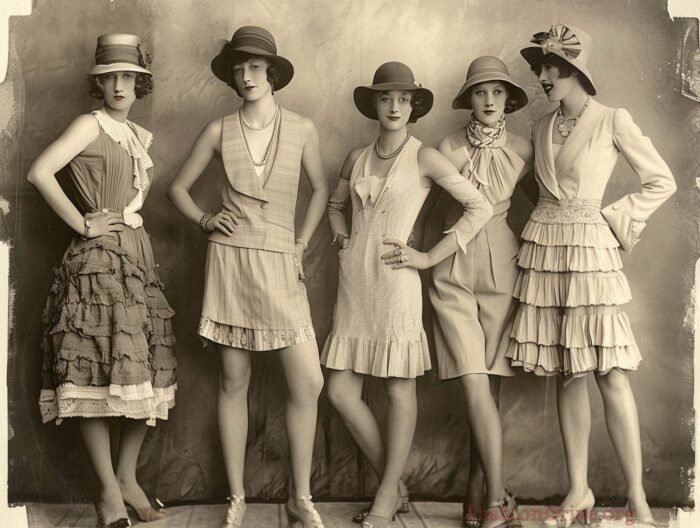
The flapper dress was one of the iconic fashions from the 1920s for women. It was slim and straight, without any shape to it, usually knee-length as well. Very different from the corbie silhouettes that came before it.
The materials used to make these beautiful, shimmering dresses were silk and chiffon. They were sewn with sequins, pearls and gold leaf beads. All that wonderful fringe took hours to cut into a perfect three-inch size.
Women could dance to their hearts ‘ content in flapper dresses; jazz was in the air. This was a symbol. Combining that look with T-strap heels and a feathered headband became classic for women in Jazz Age fashion.
The Drop Waist Silhouette
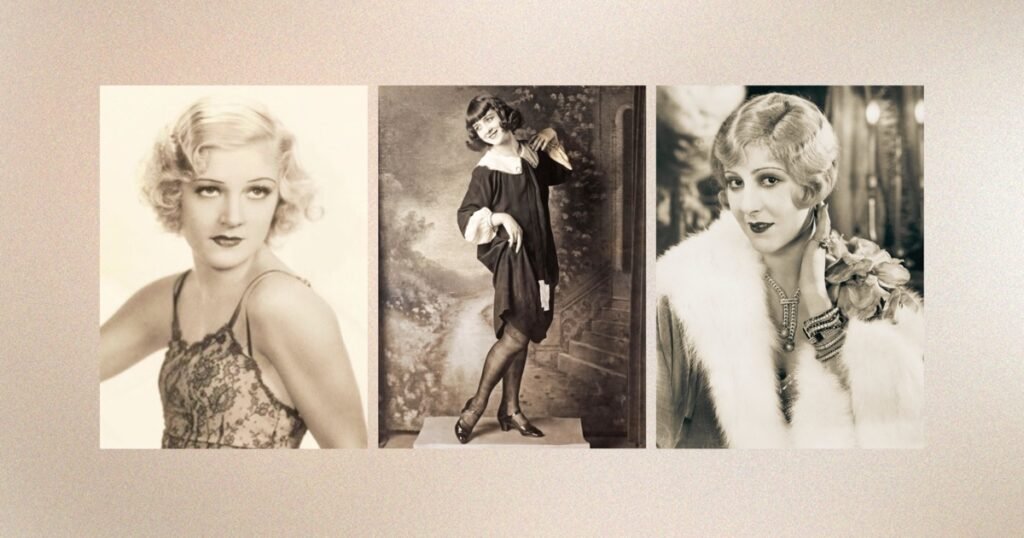
Yet another huge characteristic of 1990s women’s clothing is the dropped waist. Instead of being cinched tightly at the waist, the line drooped to one’s hips, which gave off a relaxed and extended feeling. This silhouette became essential in day dresses, evening gowns, and even casual wear.
The trend not only marked a new style but also a cultural shift—away from uncomfortable clothing and towards laid-back grace. Even today, many fashionable women’s trends are influenced by this 1920s silhouette.
Fabrics, Colors, and Patterns

In terms of materials, luxury and practicality were especially fashionable in the 1920s. The fabrics used included satin, velvet, silk, and chiffon, with colors from the softest pastels to bright jewel tones such as emerald, ruby, and sapphire. Black, known as both Chanel’s color and an evening wear color, was especially popular.
Additionally, geometric prints, art deco motifs, and floral embroidery of Girly Times were also in style. These patterns were stylish and tasteful while reflecting the modern woman’s femininity and allure.
Accessories and Glamour: The Perfect Finish
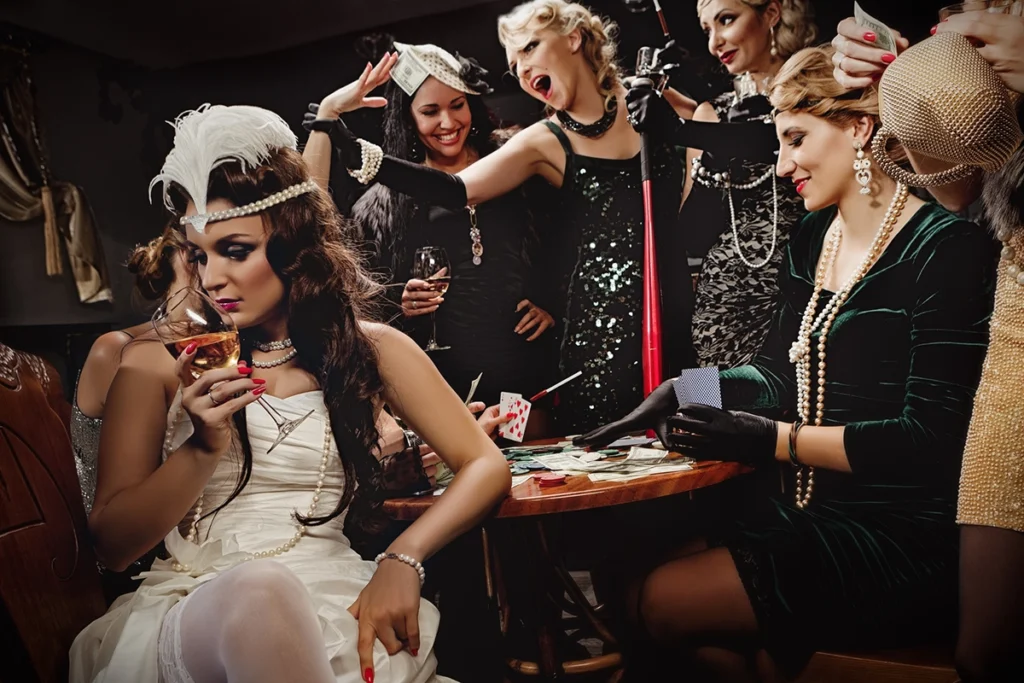
No 1920s costume was complete without dress accessories. This decade saw the advancement of accessories to new sizes, defining fashion trends for women worldwide. Popular items included:
- Cloche Hats – A snug, bell-shaped hat that framed the face.
- Long Pearl Necklaces – Often layered to create a glamorous look.
- Feathered Headbands – A must-have for evening parties and flapper dances.
- Beaded Bags and Gloves – Perfect for completing a sophisticated ensemble.
Women also embraced new hairdos like the bob cut, finger waves, and elegant bobs paired with bold red lipstick and kohl-lined eyes, marking a descriptive beauty norm of the decade.
Evening Glamour vs. Daytime Chic
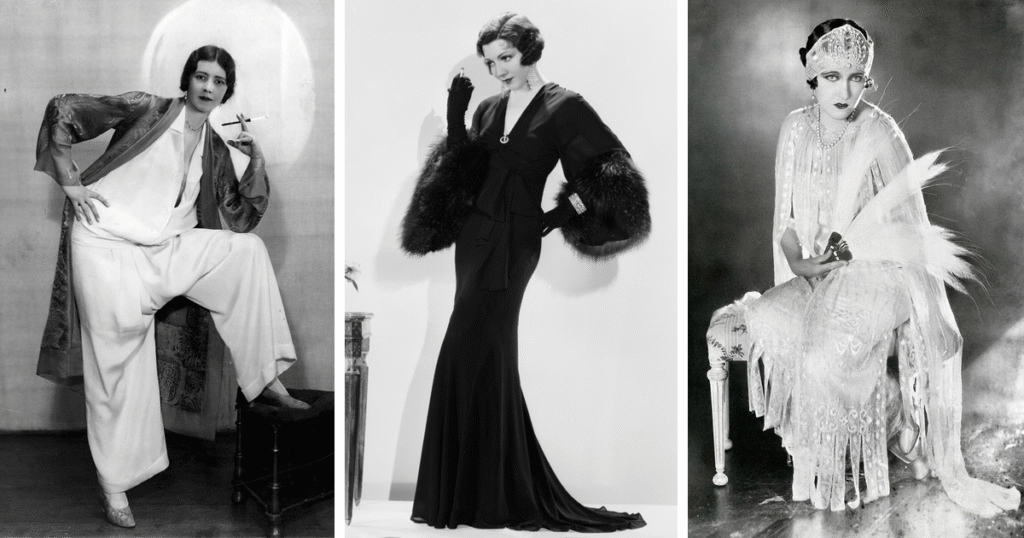
The 1920s closet contained a very stark difference between day and evening wear. Daytime fashion was much more practical — tea dresses, drop-waist skirts and cardigans. During the day women frequently dressed up with small hats and low heels.
Evening wear, though, was all sparkle and shine. Sequined flapper dresses, opera gloves and sparkling headpieces proliferated at jazz clubs and swank soirees. This division in attire allowed women the opportunity to express themselves differently in various social capacities, a break for modern female fashions.
The Rise of Modern Undergarments

One of the more interesting but often unspoken 1920s fashion trends for women was undergarments. Corsets gave way to soft bandeaus and step-in chemises. The change also gave women more freedom of movement and a freer style of dress. It was also a major moment in the body-positivity and fashion-comfort movement.
This shift laid the groundwork for much of contemporary lingerie, and another example of how the 20s continue to shape fashion in other eras.
Fashion Icons of the 1920s Fashion Trends for Women
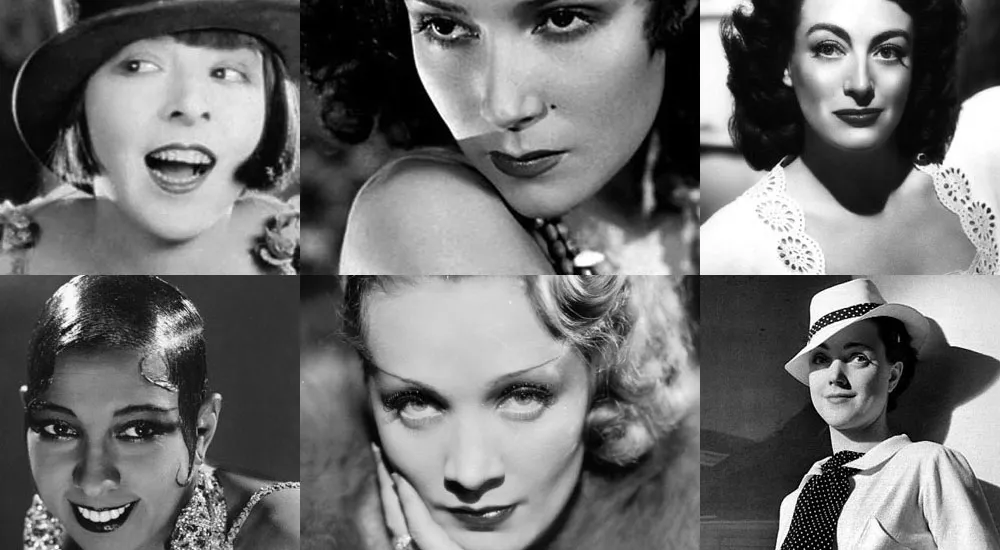
A hundred best-dressed women for the 90s Top style icons of the decade stood tall during the ’90s, defining ladies’ styles worldwide. Actresses such as Clara Bow, Josephine Baker and Louise Brooks were celebrated for their bold fashion styles and contemporary appearances.
Designers such as Coco Chanel and Jean Patou reinvented fashion for women, with simple clean lines and practical luxury. Their efforts have opened up the floodgates for forever chic styles that are still going strong!
How 1920s Style Has Influenced What We Wear Today
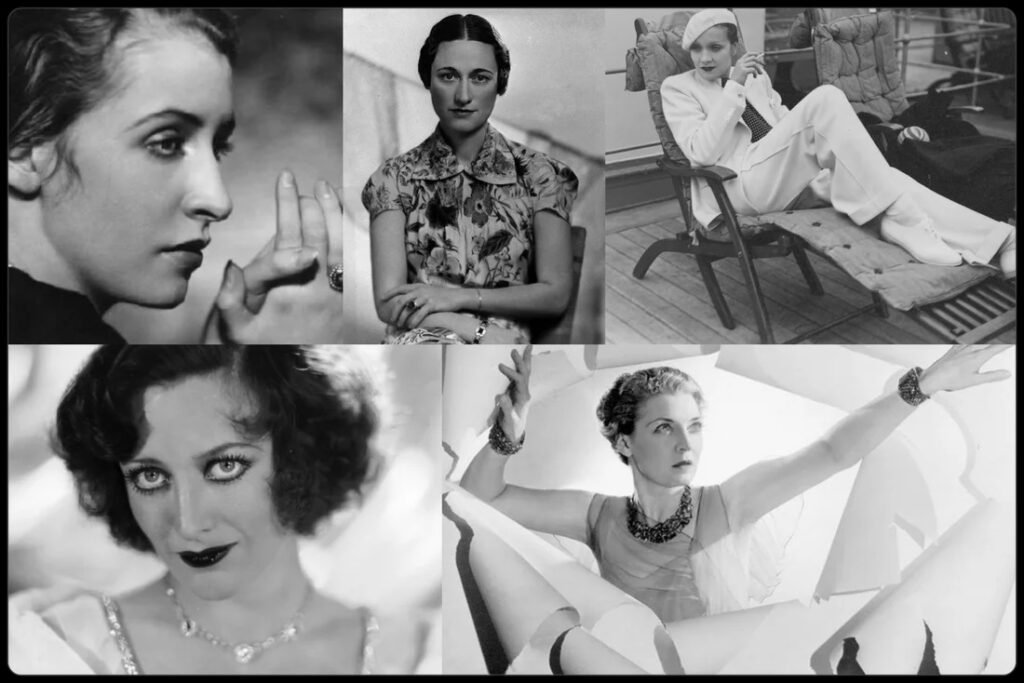
The 1920s may have come a hundred years ago, but the impact of the dawning decade on how we dress as women today can’t be denied. They’re a leitmotif for modern designers, who frequently revisit flapper dresses and fringe details and art deco prints for runways and red carpets.
From a drop waist to micro-mini hem, the fashion for women trends of the 1920s have a lasting effect on what we wear today, and it is not too hard to see where these influences reappear in modern day womenswear. Even publications and brands like Harper’s Bazaar are still nostalgic for this era on editorials.
Why the 1920s Were a Turning Point for Women’s Fashion
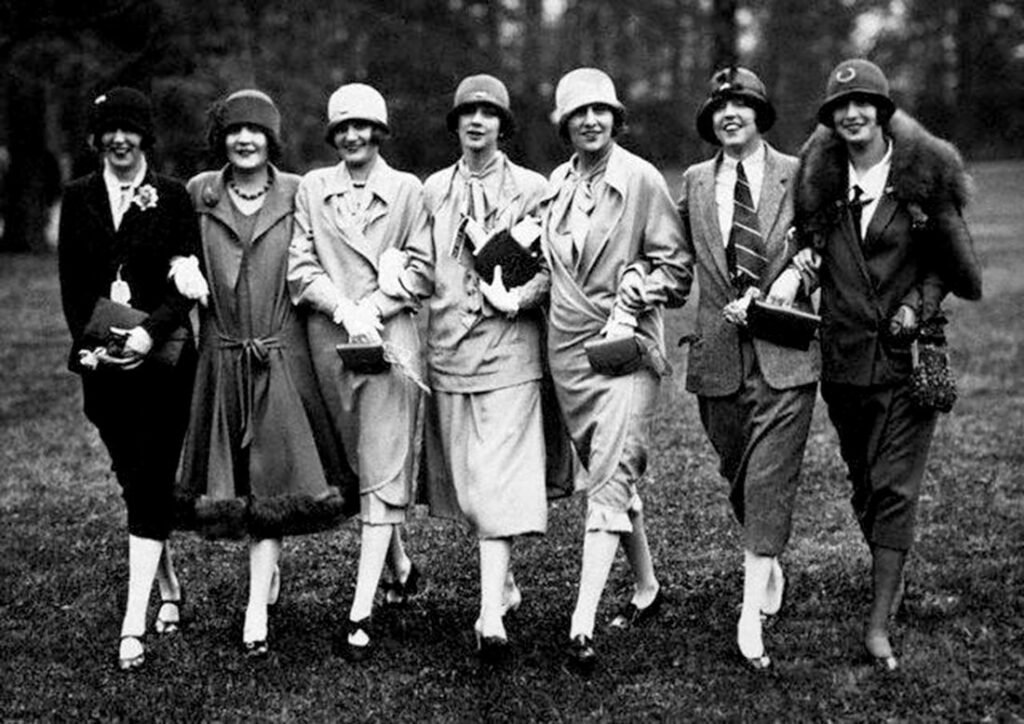
The 1920s Fashion Trends for Women were not just a revolution of style, but of culture. Women’s clothing became another factor reflecting independence, confidence and individuality. Apparel was no longer strictly about modesty; it also became a vehicle for self-expression.
This potent metamorphosis long reverberated through subsequent eons. The 20s era had a cultural change as well, it’s spirit manifested in fashion for women.
A Timeless Fashion Legacy
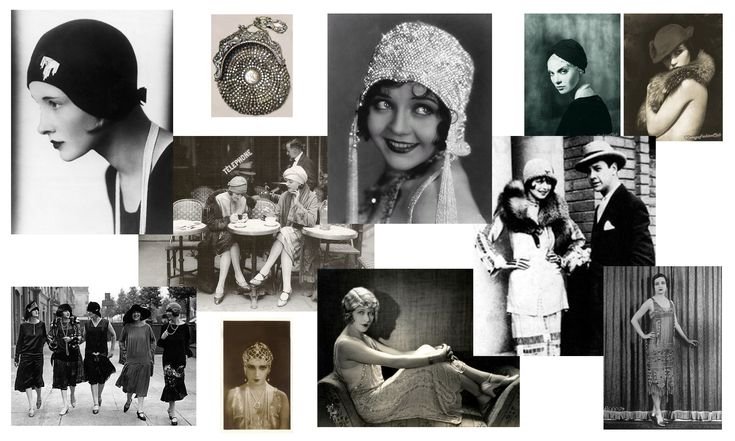
The 1920s Fashion Trends for Women would forever remain a golden era in style history. From flapper dresses and cloche hats to classy accessories and daring beauty, this decade revolutionized how women could communicate through fashion.
Currently, with the Girly Times, designers, influencers, and retro enthusiasts draw from this epic decade. Be it reenacting a flapper ensemble for a themed gathering or assimilating vintage hints in your everyday clothing, the 1920s classicism and daring are present.
